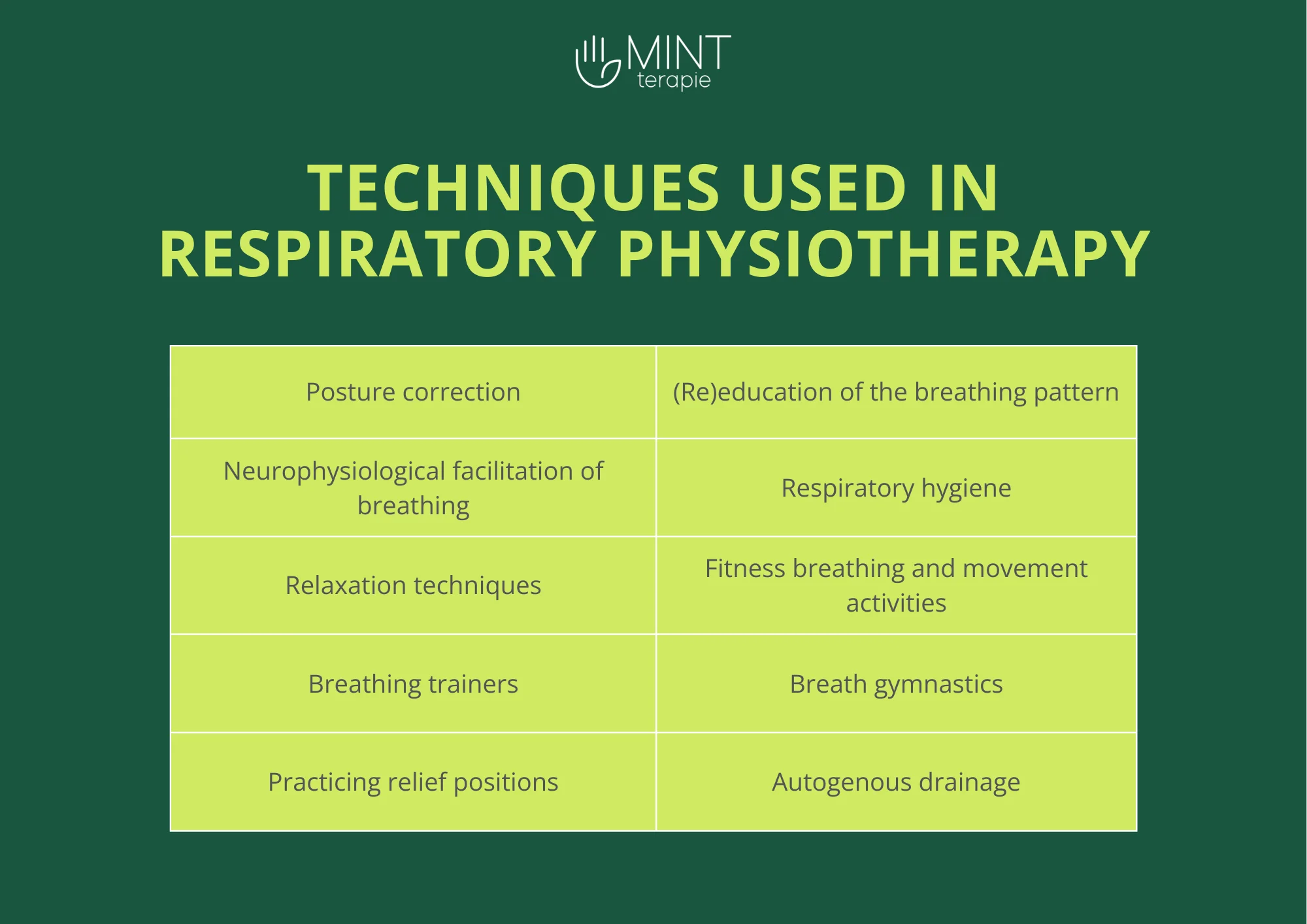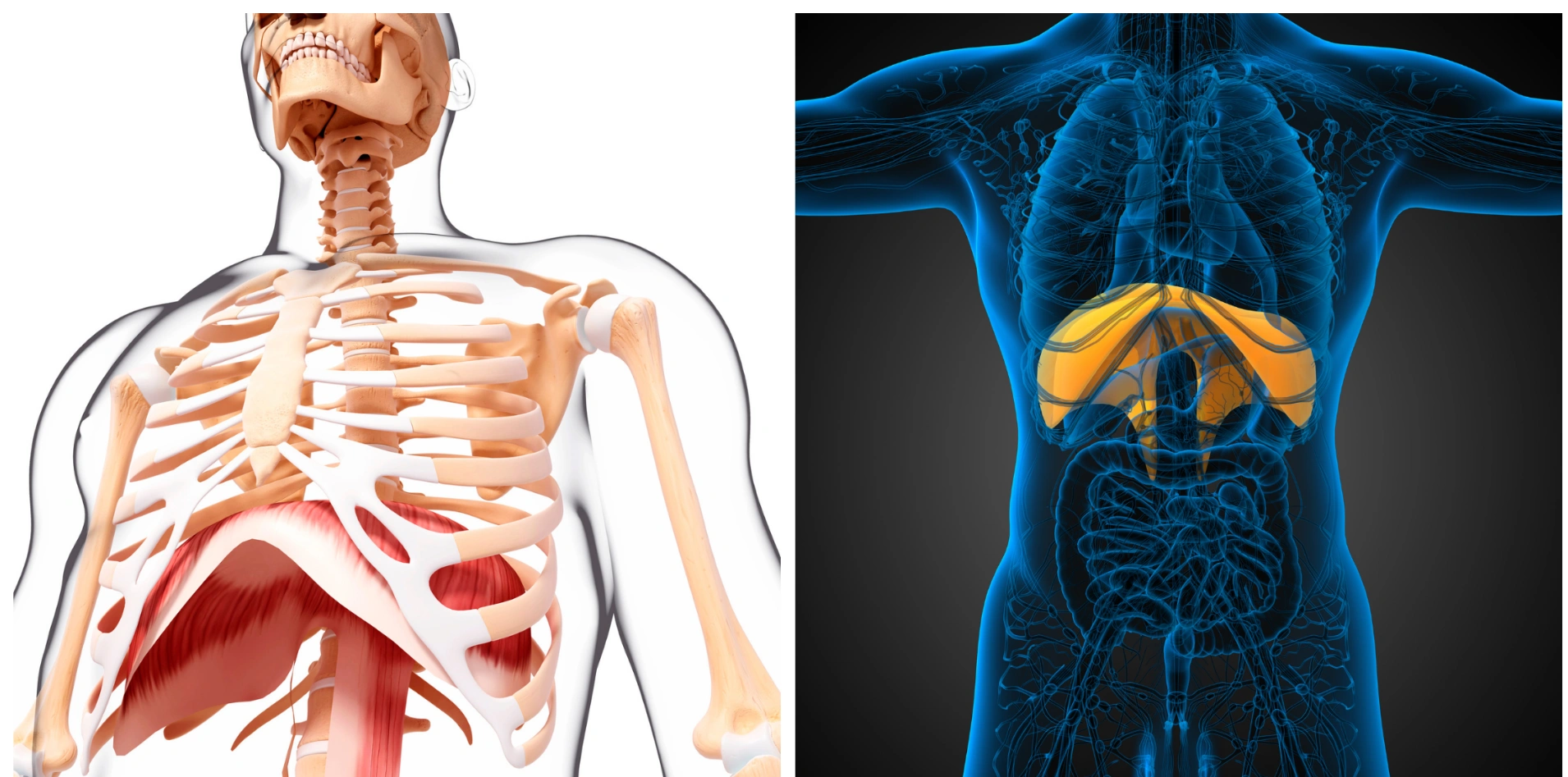In this detailed article, our physiotherapist Mgr. Olga Mikynová prepared an overview of so-called respiratory physiotherapy. Whether you are from the field and do not have a lot of experience with this type of therapy, or you are interested in the article because you have breathing difficulties, you will definitely learn a lot of valuable information!
Breathing is one of the basic and automatic life functions that accompanies us throughout life and affects our entire system. As part of physiotherapy, so-called respiratory (or breathing) therapy focuses on breathing and the difficulties associated with it. It has diagnostic, therapeutic and preventive significance and is used in both children and adults.
How is it possible that something essential as breathing can cause us difficulties? It can be an acquired or congenital disease, difficulties linked to the musculoskeletal system or psychological difficulties. Our physical load (or lack thereof) also has an effect on our breath.
Methods of respiratory therapy help to improve breathing difficulties such as shortness of breath, shallow breath or cough. They focus on adjusting and optimizing the breathing pattern, improving ventilation parameters, increasing physical condition or improving hygiene and patency of the airways.
What to expect when coming for respiratory physiotherapy?
What does respiratory therapy look like? If you visit us for respiratory therapy, the therapy will be divided into anamnesis, examination, treatment and exercises. As part of the medical history, we will ask you about the reason for your visit and details about your medical condition, such as previous illnesses, surgeries and injuries, or the medications you are taking. If you already have medical records related to your current problem or other relevant documents, it will be beneficial to bring them with you.
During the assessment, the physiotherapist focuses on the shape and mobility of the chest and spine, muscle activity, examines muscle trigger points or blockages in the chest area and the entire spine. Your physiotherapist will also evaluate your breathing pattern and quality of breathing both at rest and in motion.
Do you feel that respiratory physiotherapy is just what you need? You can book your respiratory therapy appointment here.
Techniques used within the therapy itself can be divided into passive and active techniques. Passive techniques include myofascial techniques, mobilization, and soft tissue mobilization, in which manual work is mainly done with the chest area, chest, back and trunk muscles and the entire spine.
As part of the active component of the therapy, the patient learns techniques suitable for self-therapy. These include breathing exercises, relaxation exercises, breathing gymnastics techniques, exercises with breathing trainers or exercises to clear mucus from lungs.
At the beginning the video shows a position of the ribcage with the ribs flared out. After that you can see a transition into a position where the ribcage is nicely stacked above the pelvis. The diaphragm, the main inspiratory muscle, then has the ideal space for its full movement.
How does the „correct“ breathing look like?
The optimal breathing stereotype is ensured by the harmonious coordination of the respiratory muscles and the activation of the three respiratory sectors and types of breathing. Diaphragmatic breathing is given in the lower sector, rib breathing is given in the middle sector of the chest and subclavian breathing happens in the upper sector.
With an optimal breathing stereotype, the full capacity of the lungs should be used and the lungs should be ventilated evenly in all parts. Our breath should be calm, quiet and rhythmic.
Exhale should be longer than inhale and there should be a short natural pause between each phase. While resting we should breathe through our nose, during exercise we can help ourselves by exhaling through our mouth. However, mouth breathing should be avoided and used mainly in case of high physical exertion.
You can read more about the benefits of nose breathing here in one of our previous articles.
Inhale is active process, while during rest exhale is a passive action. Our main inspiratory muscle is the diaphragm which is dome-shaped and separates the chest and abdominal cavity. It helps to stabilize the thoracolumbar spine, is an important postural muscle and has the function of the esophageal sphincter.
When inhaling, the diaphragm should flatten and move down. Following this, the chest expands in all directions and the abdomen arches outwards. During exhalation, the diaphragm returns to its original position, the abdomen and chest flatten.
Dysfunctional breathing may lead to muscle overload, insufficient use of lung capacity, deterioration of lung hygiene or deterioration of physical performance and load tolerance may occur. Simply put, we will be out of breath more and get less done.
The diaphragm is dome-shaped and separates the abdominal cavity from the chest cavity.
Role of respiratory physiotherapy in specific diagnosis
Respiratory therapy is the basis of medical rehabilitation for those who suffer from diseases of the cardiorespiratory system in both acute and chronic form. The most common diseases are chronic obstructive pulmonary disease (COPD), bronchial asthma, pulmonary fibrosis or conditions after pneumonia.
The therapy helps these patients with an increase in physical condition, improvement of pumonary hygiene and airway patency.
Respiratory therapy is also used in the case of (especially recurring) colds, allergies with respiratory symptoms or smoker’s bronchitis.
There are different forms of respiratory therapy such as group exercises or exercises in nature.
Sport
Respiratory therapy is also used in sports training. A so-called inappropriate breathing stereotype or an otherwise insignificant disease of the respiratory system can fundamentally reduce performance and prolong the recovery time after exercise which can trouble any athlete. Respiratory muscles consume up to 20% of the total oxygen consumption, so improving their performance leads to overall better performance.
Respiratory physiotherapy helps to increase the respiratory volume, increase the maximum strength of the inspiratory muscles, improve the flow of breath during intense exercise, correct activation of the diaphragm during exercise and improve tolerance of exercise.
Elements of respiratory therapy, such as exercise with breathing machines, are becoming more and more widespread among athletes and are used as part of training.

